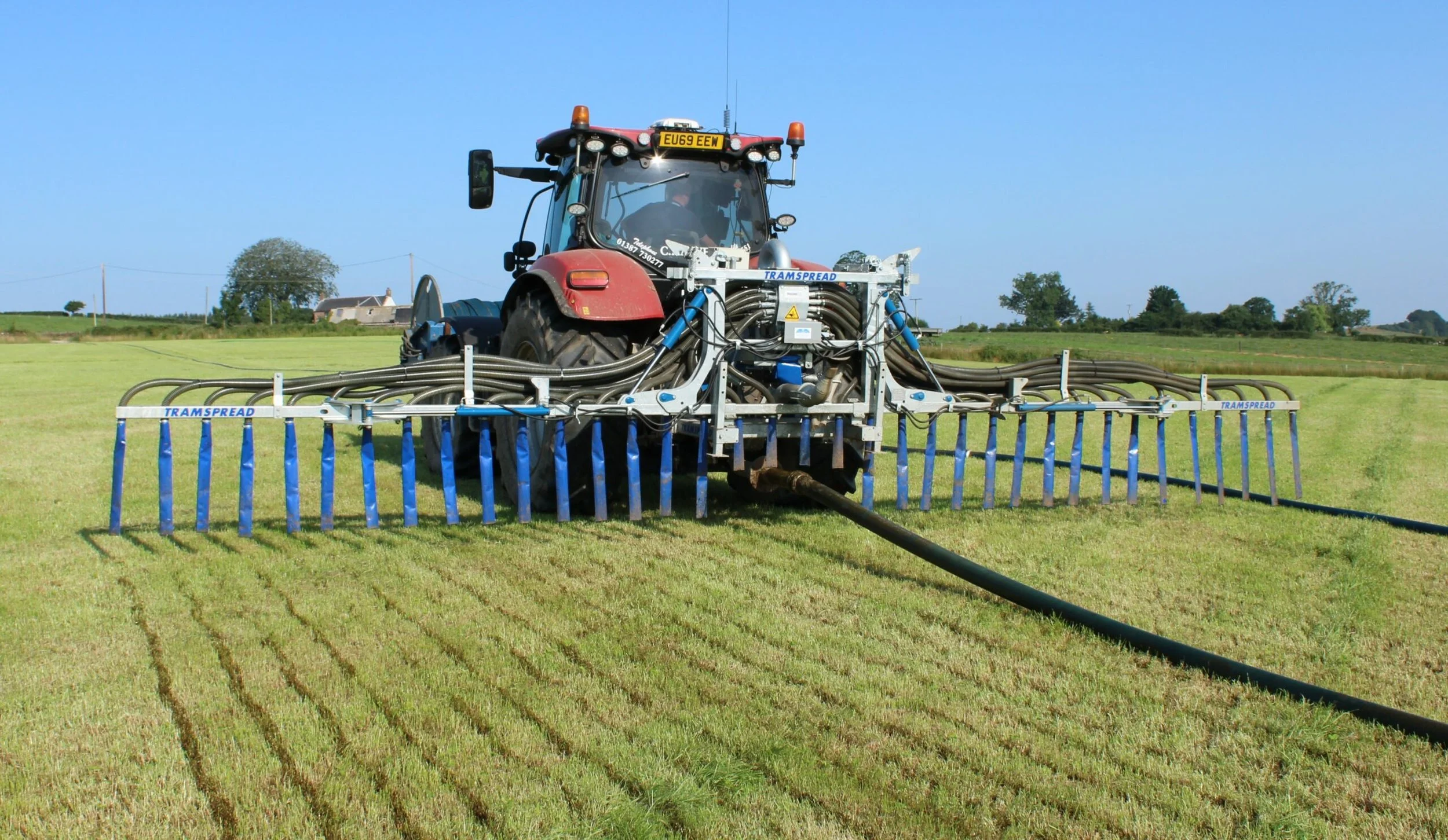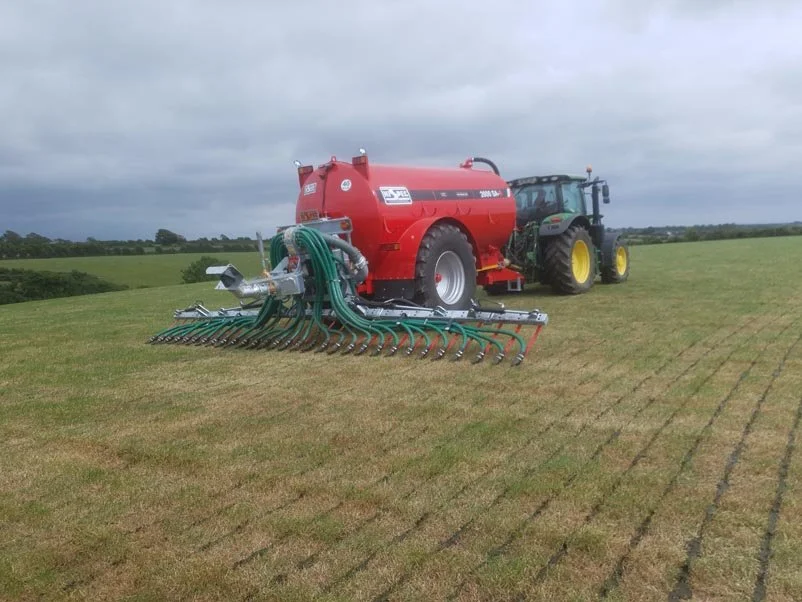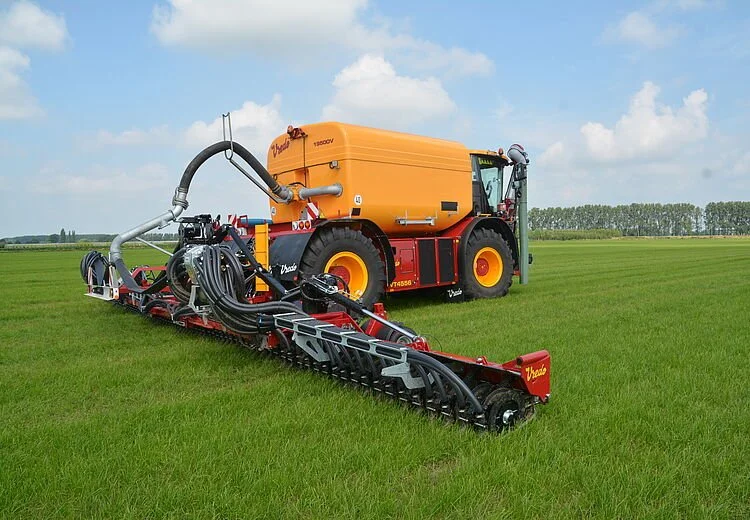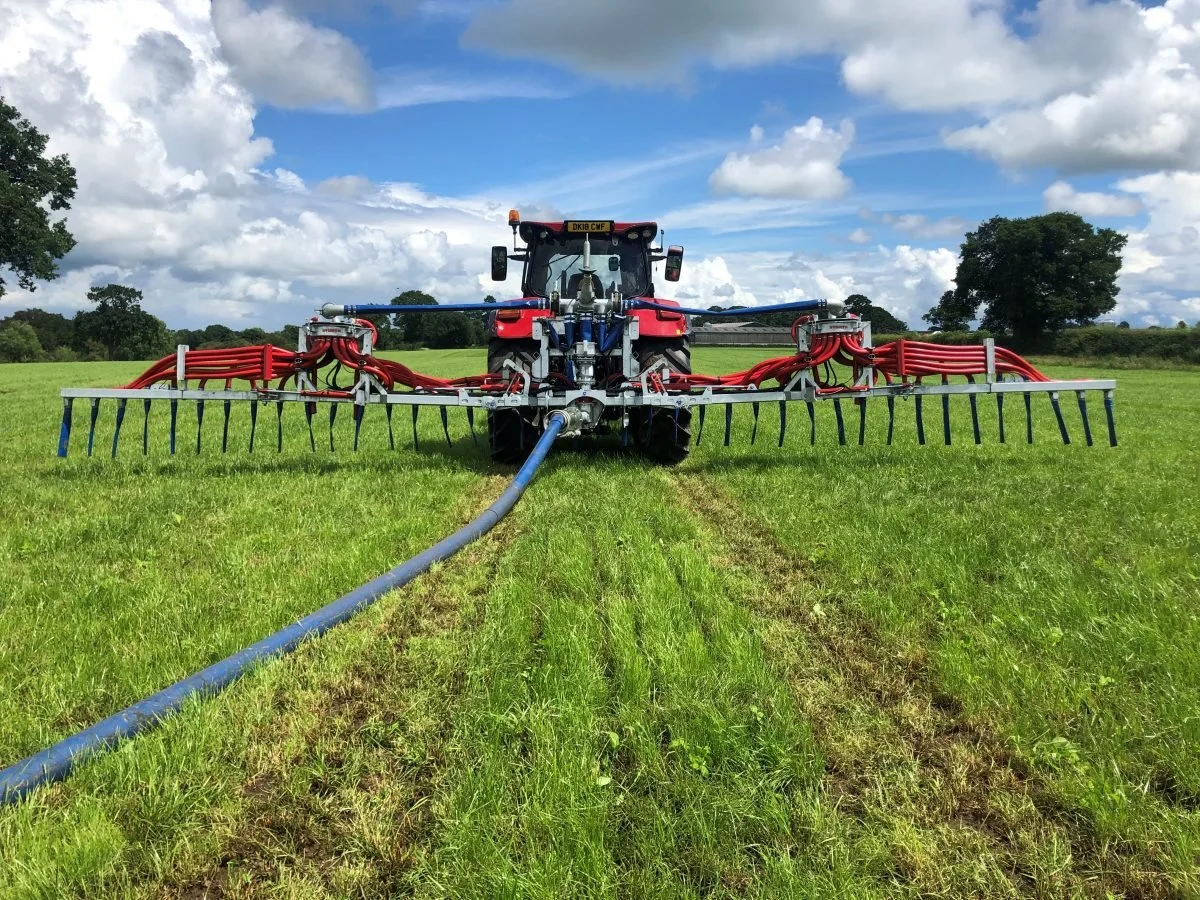How to avoid slurry contamination in silage
We all know slurry in the silage is a very bad thing and something we all need to avoid but changes in regulations are increasing the chances of bringing slurry contamination in with your grass silage. This is a problem that more and more livestock farmers are facing so we need to find some solutions.
Tramspread dribble bar
Firstly a bit of background, not only is slurry in the girls dinner a really unpleasant thought, it’s also really bad for the silage preservation in the clamp. That’s because slurry and muck contain billions of bacteria that are disastrous in the fermentation process. Add in the chances of infections of lystiria and clostridia in livestock and it’s clear that you need to do everything you can to keep slurry away from the silage.
So how is slurry getting into the crop?
Well mostly from being picked up by the mower and rakes and being incorporated into the swath. The traditional solution to this is to spread the slurry a bit more thinly and / or increase the cutting height a little bit to make sure the slurry is left behind.
Well that was then. Today slurry is moving off the liability sheet and into the asset column. As fertilizer prices continue to float around in the stratosphere, farmers need to make better use of the slurry that they have available. That means using slurry to get the grass growing. As more and more herds have a core or all the cows housed 365 the volume of slurry that has to be spread has increased. Add to this a move to specialisation of agricultural enterprises and we find both dairy farmers and AD plant managers both faced with the headache of just where to spread this stuff. These two factors mean advice to spread slurry thinly might not be what you want to hear.
So how is legislation effecting this situation?
The slurry spreading window has a small influence concentrating the time period but the impending ban splash plates (or current ban depending on where you live and when you’re reading this) has a much larger impact. Dribble bars and trailing shoes are great for reducing smells and losses but can produce the troublesome “slurry sausages”. This is where the fibrous material in the slurry forms a mini mountain ridge in the base of the sward.
HiSpec tanker and trailing shoe
Obviously the choice of bedding is really important here, and while all bedding will cause problems to some degree, sawdust is the most likely to produce the worst issues. Over time the problem can get worse as the incorporation of the material into the soil by worms fails to keep up with the rate of application. The spreading of macerated slurry in concentrated strips from a dribble bar just overloads the worms’ ability to pull the matter down into the ground. The height of the residue makes it impossible to just “cut a bit higher”. This is also the real world and no matter how level the fields might look there is always the odd moment when mower turns into power harrow and the blades go lower than intended.
So if we can cut high enough what can we do?
Let’s start with the Rolls Royce solution first for once. Slurry injection puts the stuff out of harms way once and for all. Not only is the muck out of reach for the mower, it also puts it where the plants need it most. The roots get to make maximum use of the nutrients without the leaves getting a spray coating of the brown sun screen. Once we include the added benefits of minimal atmospheric losses and almost zero chances of run off and injection looks like a winner - but then there is the cost…..
Vredo slurry injection
Maybe the economics of slurry injection will make this the default choice at some point, but that point is probably not today for most UK farmers.
What about a change of bedding material?
Changing bedding to solve this problem seems backwards thinking to me. The bedding should be selected firstly for the benefit of the cows. Whatever system of bedding you have chosen will have been selected for a number of reasons, so I will assume that replacing the bedding is not an option. Separating the bedding from the slurry might be a next best thing though.
Separating the fibbers from the liquid should eliminate the problem of slurry sausages in the base of the sward. Although this is a good solution, remember it makes spreading the more dilute slurry easier, it again comes at a cost. There is a significant capital cost of the separator, the running costs and dealing with the solids all need to considered, along with the inevitable breakdowns.
So what’s the cheap and cheerful solution?
Possibly the easiest way to deal with the slurry sausage is to leave it a couple of days and then run across the sward with a grass harrow or chain harrow, hopefully running at an angle to the slurry sausages. At this point the liquid should have been absorbed into the soil or evaporated so you should only be spreading the fibre. This together with good soil management should give the worms the very best chance to incorporate the fibre into the soils.
Storth double macerator dribble bar
There are developments in Germany to try and address this problem with a different design of trailing shoe. The idea is to spread more of a band of slurry rather than a narrow strip. Time will tell if this solution will prove successful and please the legislators. Who knows, but one thing is clear, this problem is not going to simply disappear and is one that needs monitoring and managing.
If you want to know more about the avoiding contamination of your or would like to discuss any other aspects covered in this series, contact me at jeremy@silageconsultant.co.uk



